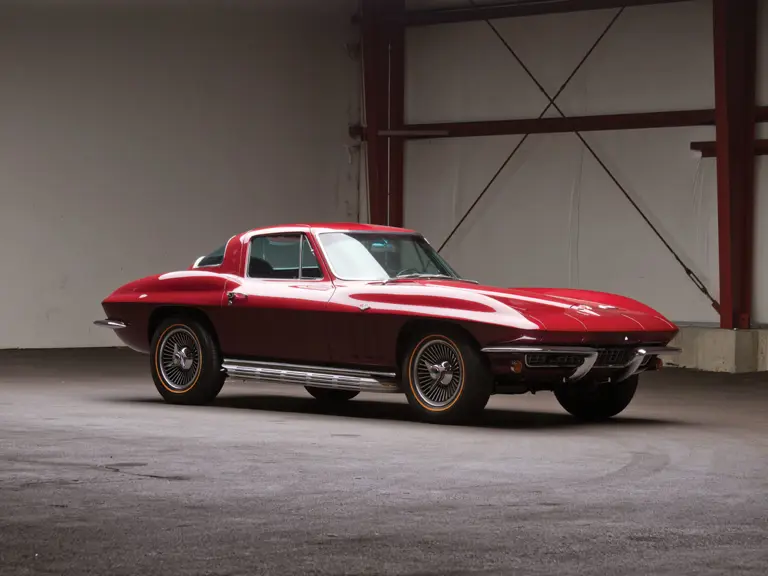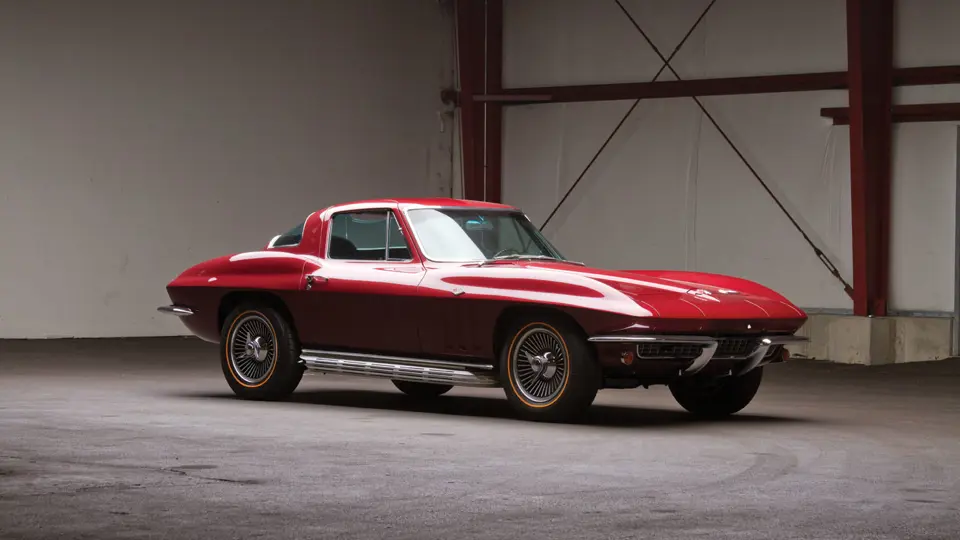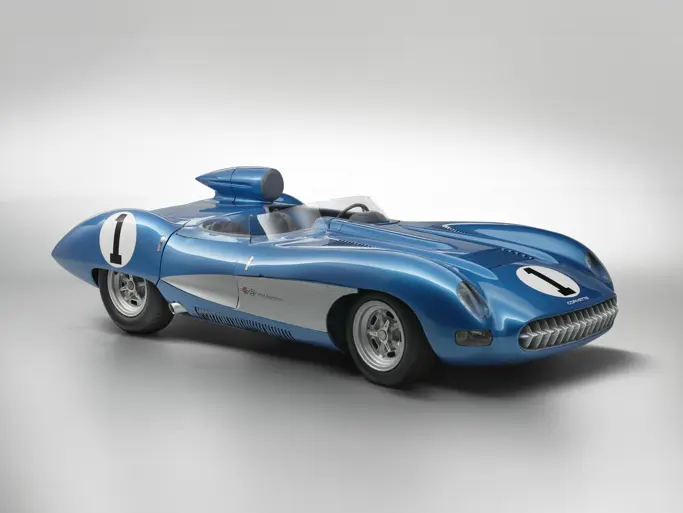 | Auburn, Indiana
| Auburn, Indiana
When Larry Shinoda and his Corvette design team began work on the new-for-1963 Sting Ray, it is unlikely that they understood the impact that this groundbreaking design would have on the performance car world. Engineering was carefully guided by Zora Arkus-Duntov, beginning with the Sting Ray‘s simple, but highly-effective independent rear suspension, followed by several other important milestones, marking the Corvette’s relentless progression that endures to this day. Long considered a modern classic, the car’s aggressive lines and sleek profile were perfectly suited to its role as GM’s image leader. As well, a broad range of powertrain options and countless racing victories helped the Corvette earn the title of “America’s sports car.”
It is no wonder that when Chevrolet recently unveiled the 2014 Corvette, they chose to bring back the Sting Ray name. The Corvette Sting Ray of the 1960s had something of a dual personality. With its adept handling, it was easy to drive fast and was manageable for everyday use, in keeping with the MG-beater it had once intended to be. Yet, as the available V-8s grew ever larger and the options list grew ever hotter, with more and more go-fast goodies available, the Corvette also began to take on an element of musclecar. By the mid-1960s, there were few American production cars that could take on the Bow Ties best on road or track, establishing a proud heritage of streetable high performance that the Corvette carries forward proudly to this day.
The race-prepared Corvettes continued to prove themselves while pursuing international racing that really allowed them to come into their own in the fabled long-distance endurance races. In 1966 a Sunoco-sponsored Corvette Coupe was entered in the 24 Hours of Daytona by Roger Penske in one of his first efforts as a team owner. Dick Gulstrand, George Wintersteen and Ben Moore would drive it to 12th overall and first in the GT category in the February race. This was followed up in March by Wintersteen and Moore placing ninth overall at the 12 Hours of Sebring. At long last they had equaled the finishing position of the Corvette’s first try in the 12 hour, 10 years earlier. They won the GT class at Sebring too; continuing to prove to any doubters that the Corvette was truly a car to be reckoned with.
It is no wonder that when you see a classic Corvette you may get a faraway look, after all this is no ordinary automobile. This is a real, out-and-out sports car that could compete with the best Grand Touring machines that manufacturers throughout the world could offer up, yet it was also as untemperamental and controllable as a family sedan. The Corvette was built to be driven - well and often, mind you – but driven. To let them sit idle is truly doing the car an injustice.
For 1966, Chevrolet made a few subtle changes to the Sting Rays. The Corvette featured a new chrome mesh grille and the roof vents disappeared completely. This coupe perfectly illustrates the changes for the year. It is handsomely presented in Milano Maroon and is fitted with a black vinyl interior. It has received a full restoration and the 350 horsepower 327 V-8 is noted to be the correct unit to this car. Options include a four-speed transmission, Delco AM/FM radio with electric antenna, telescopic steering column, clock, power steering and four-wheel disc brakes as well as the desirable and visually striking factory side pipes. The gold line tires nicely complement the cast-aluminum knock-off wheels. While not necessarily ready to win Bloomington Gold, this Sting Ray is a very high-end Chevy that will keep begging for the winding road.





